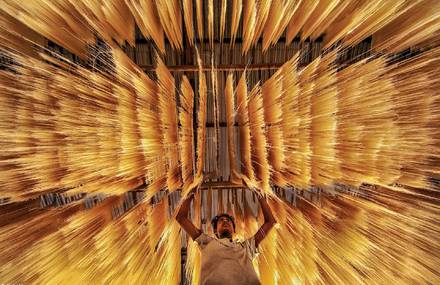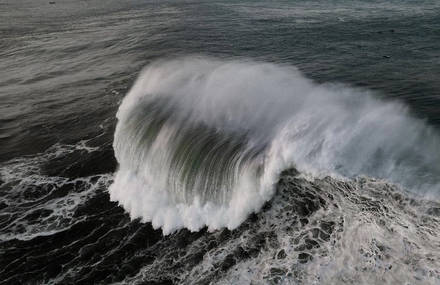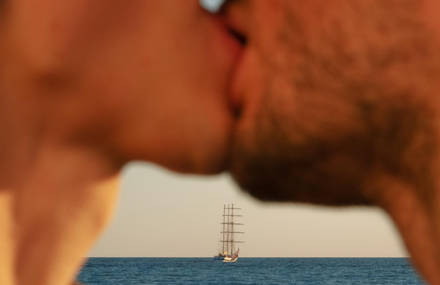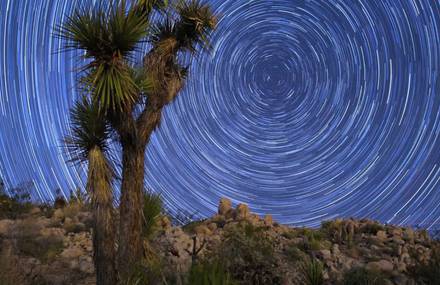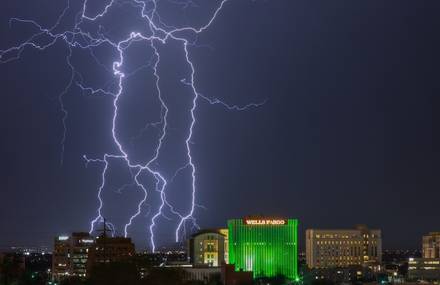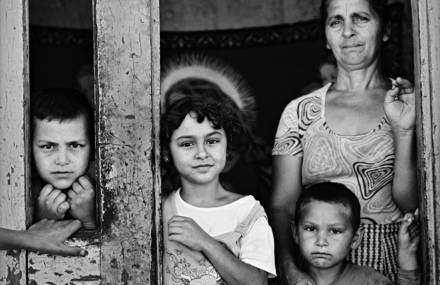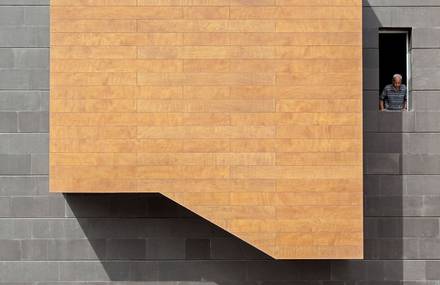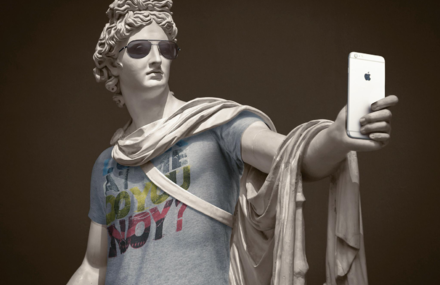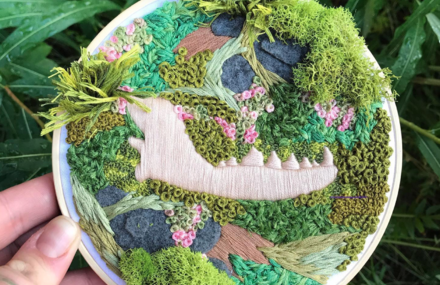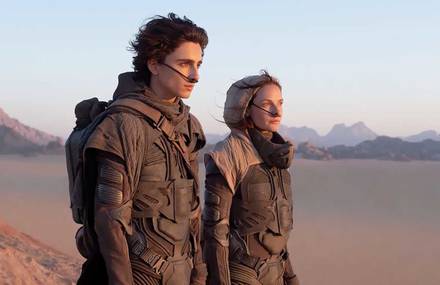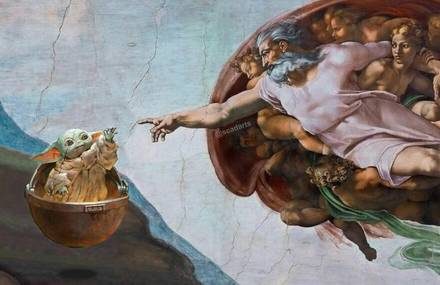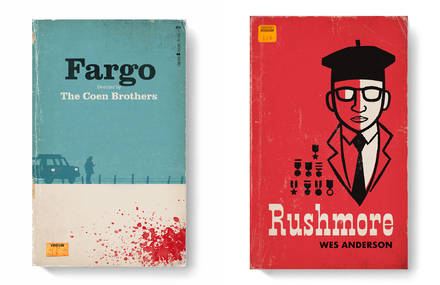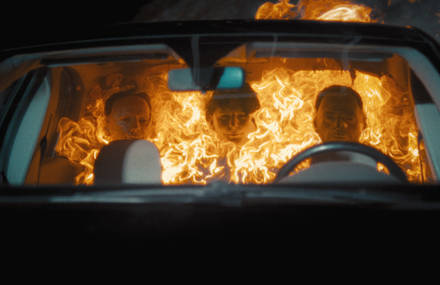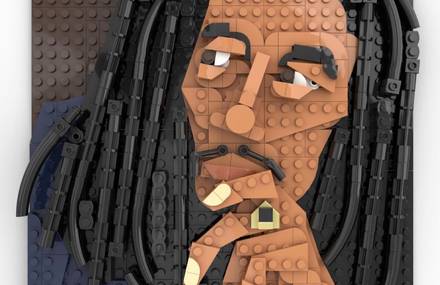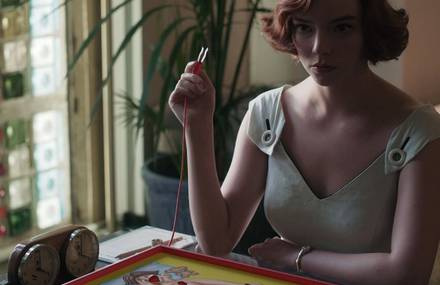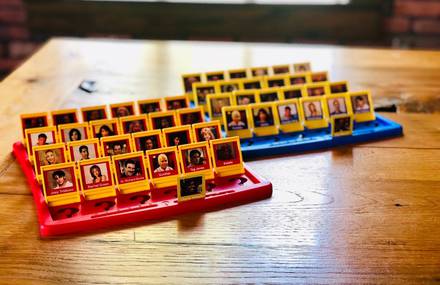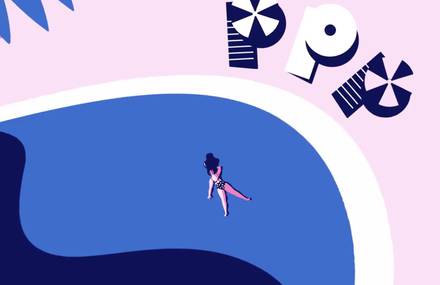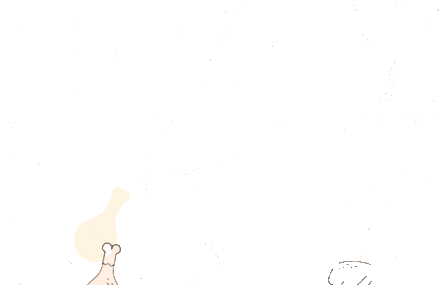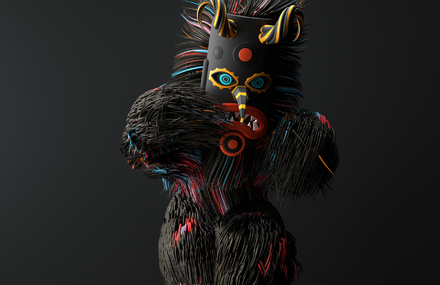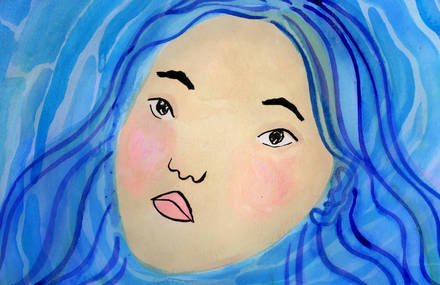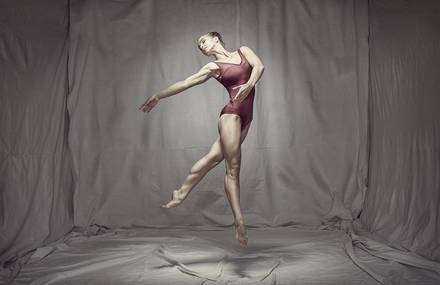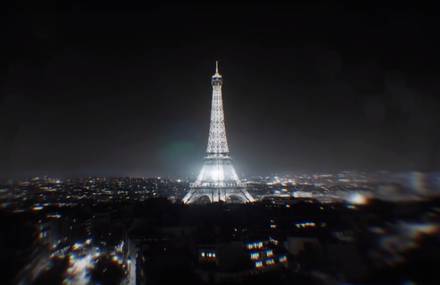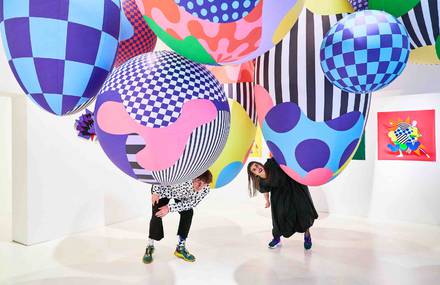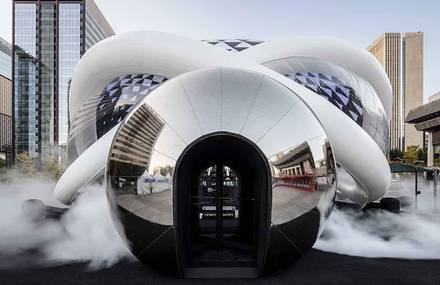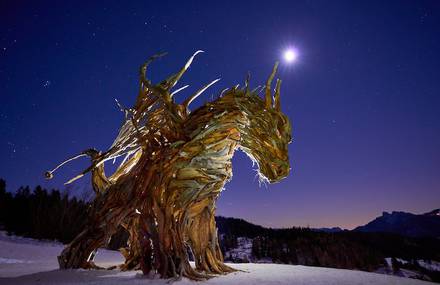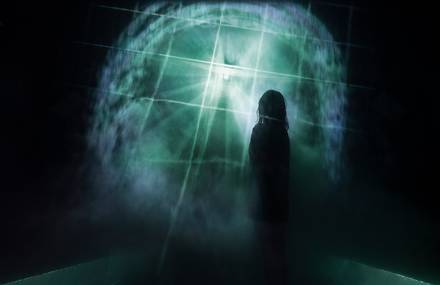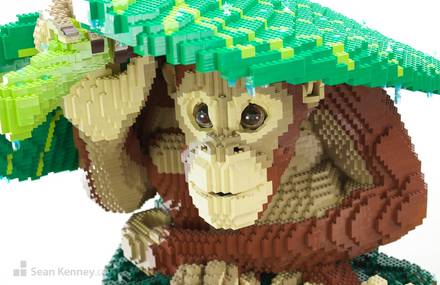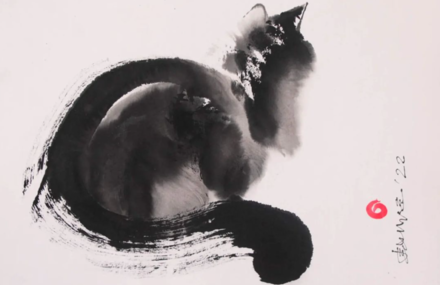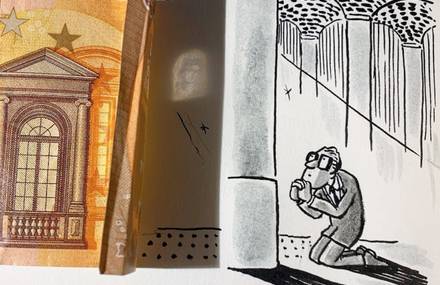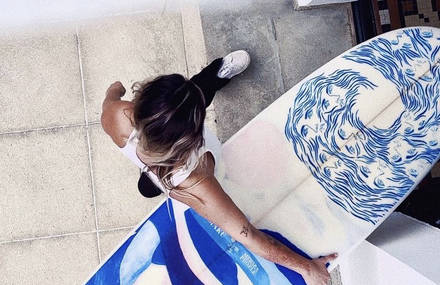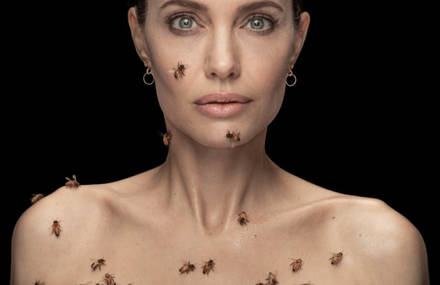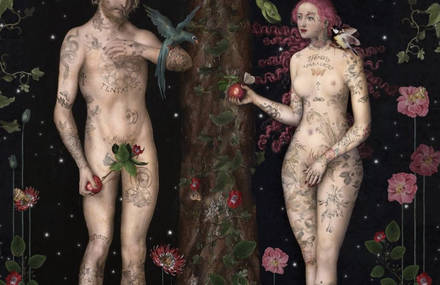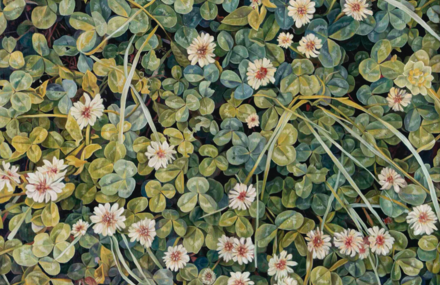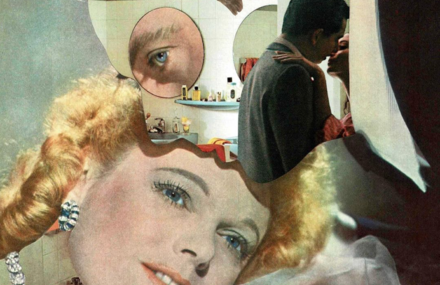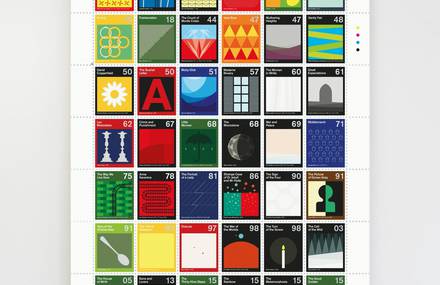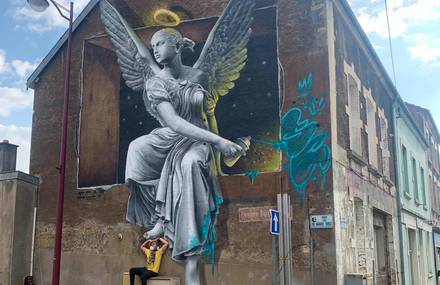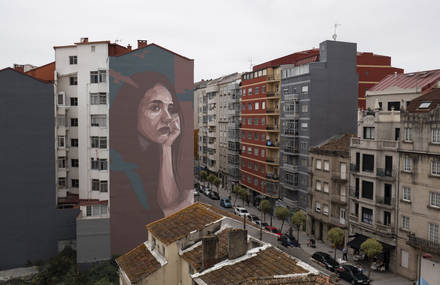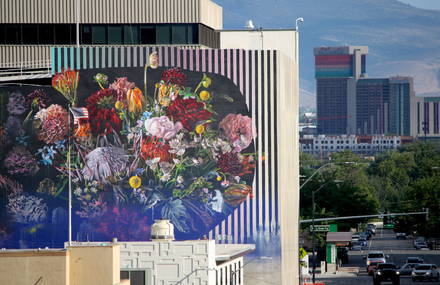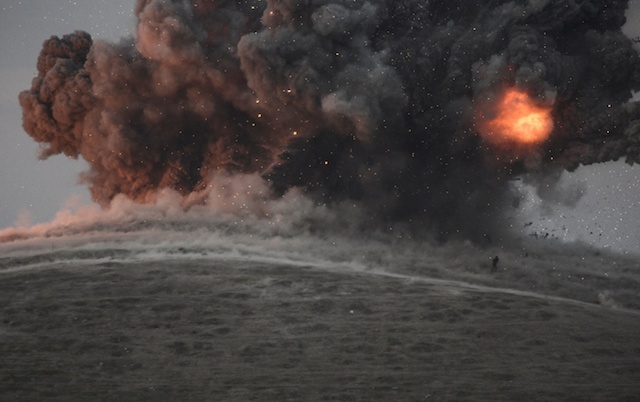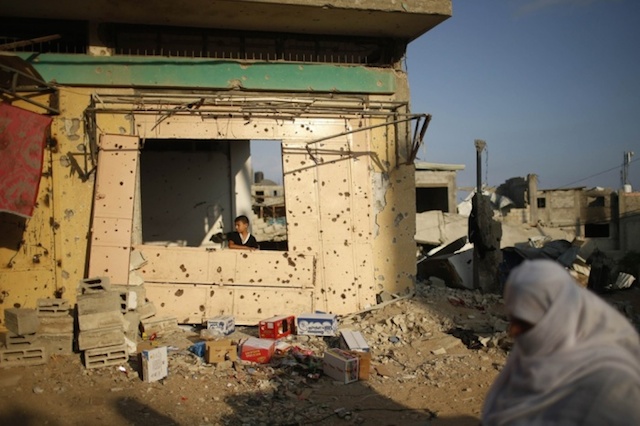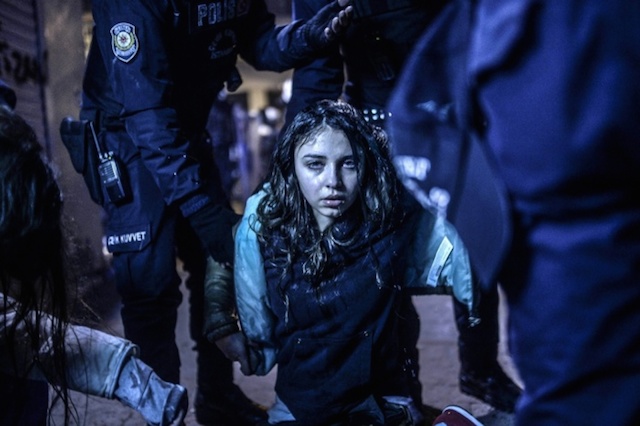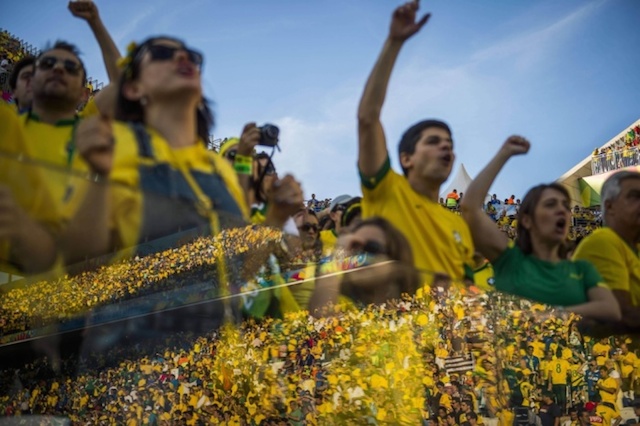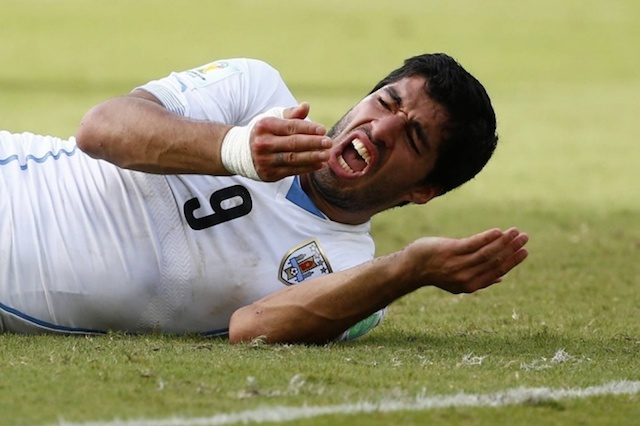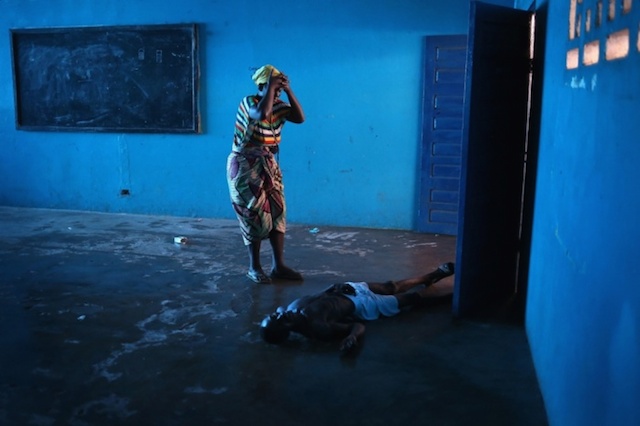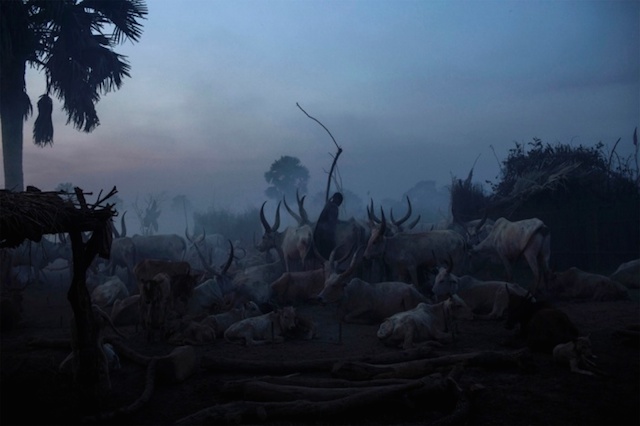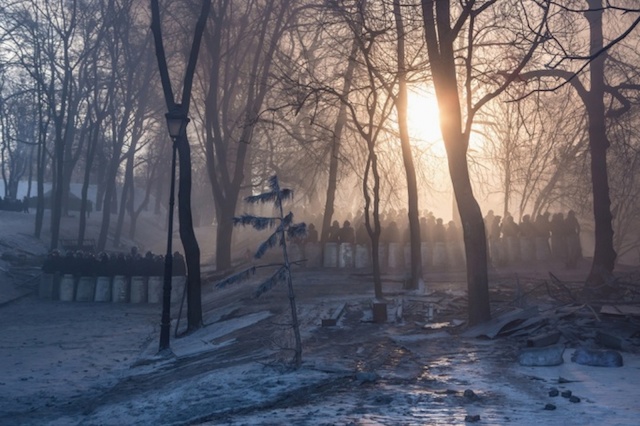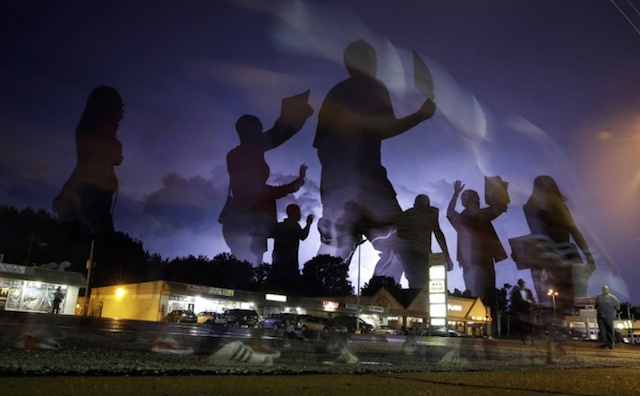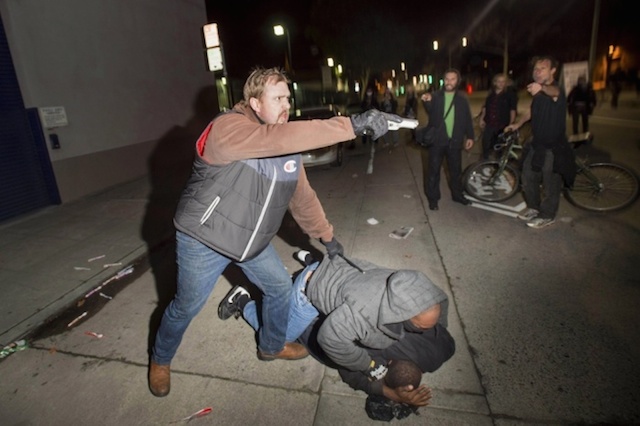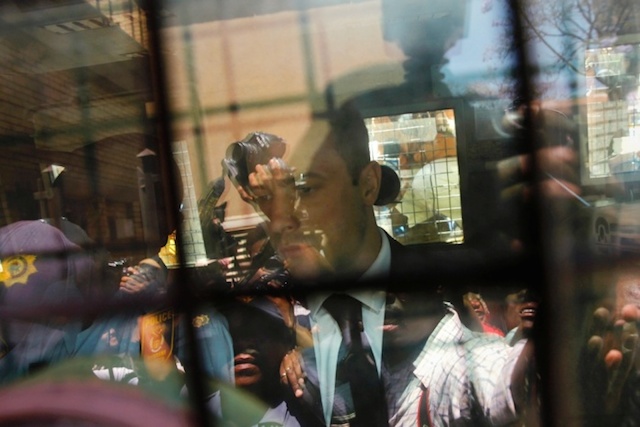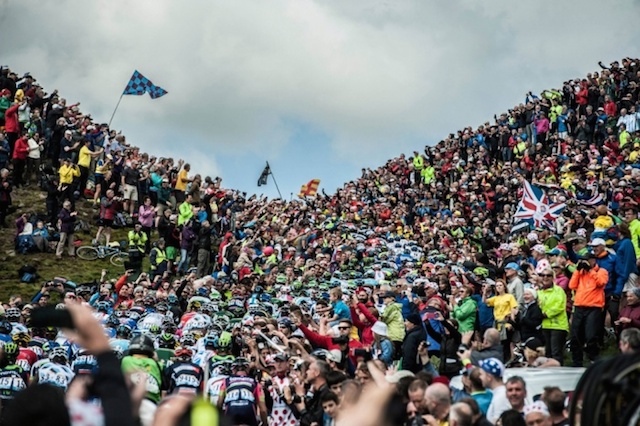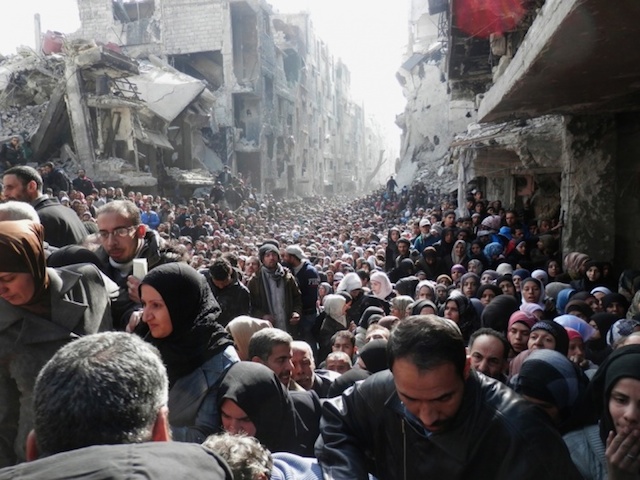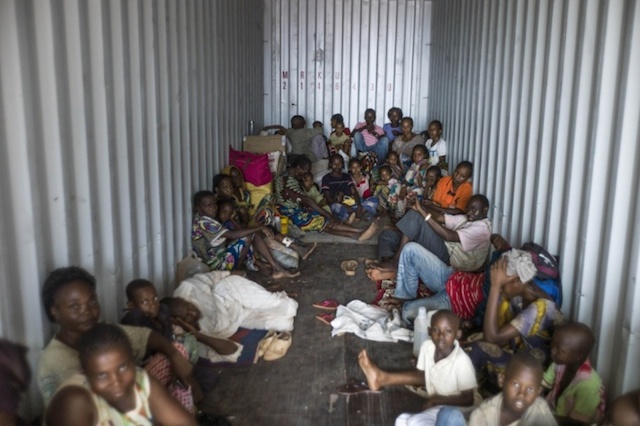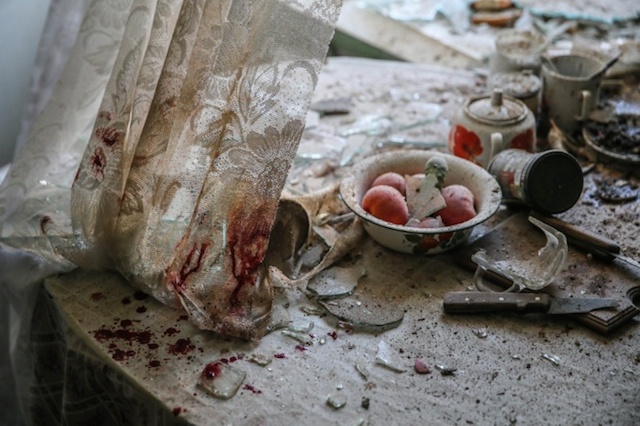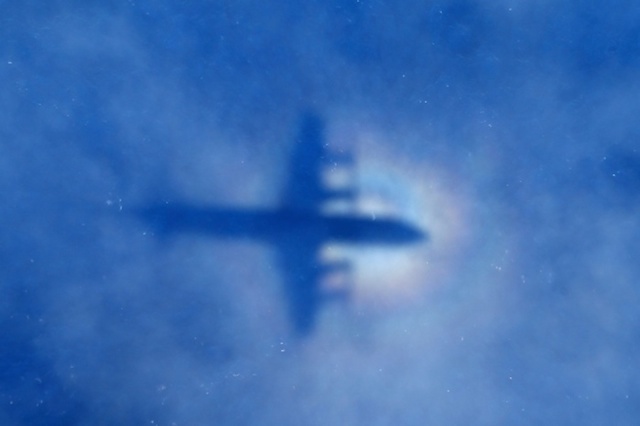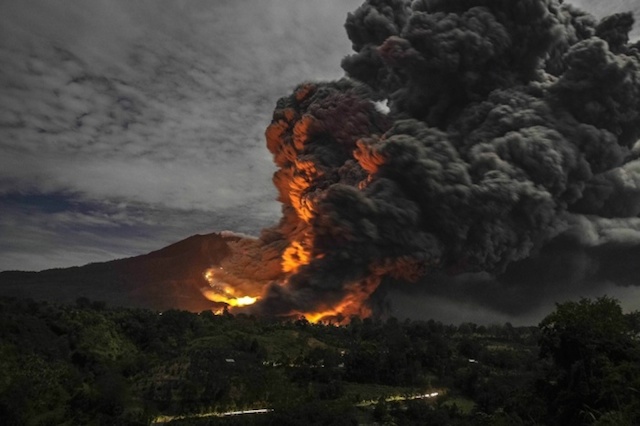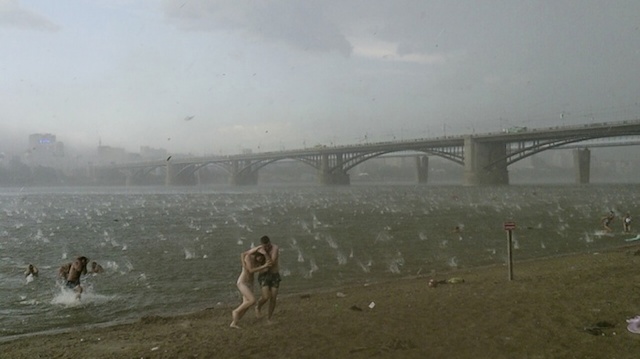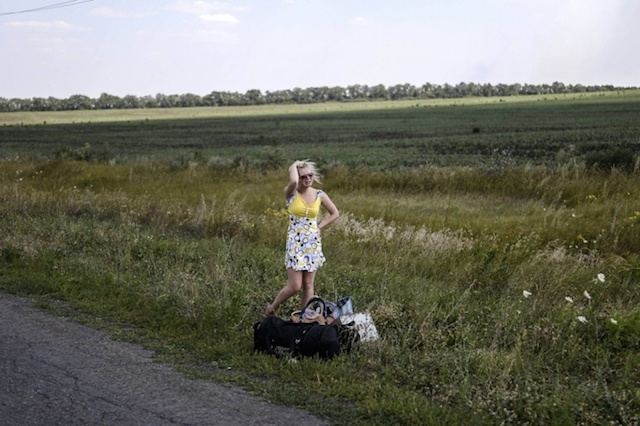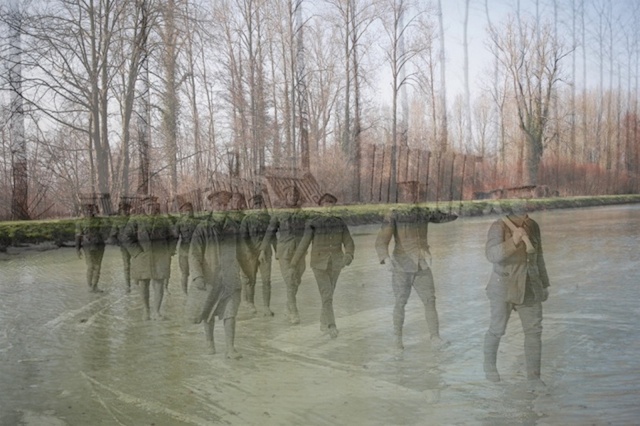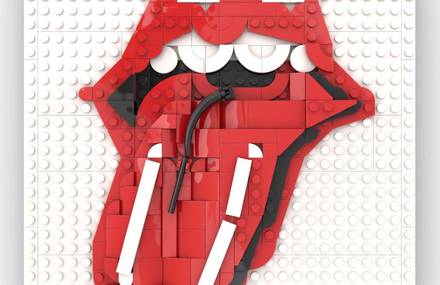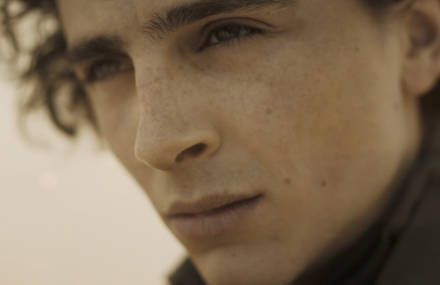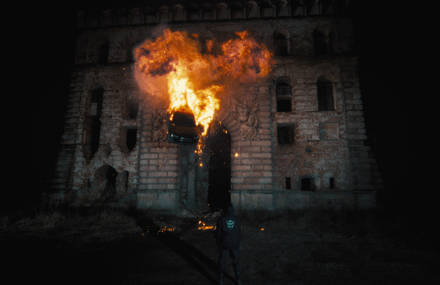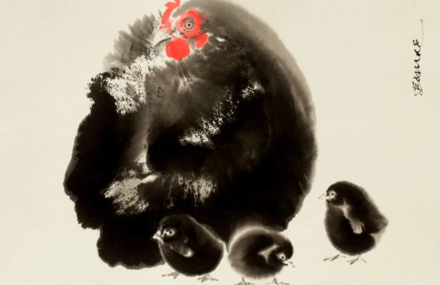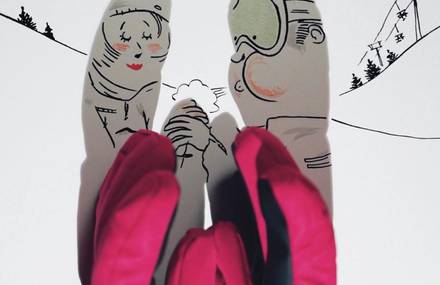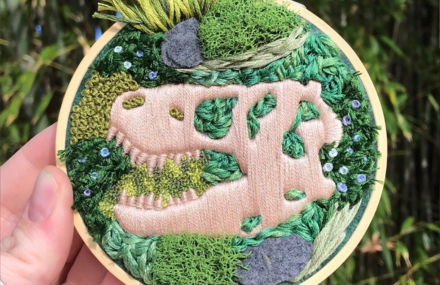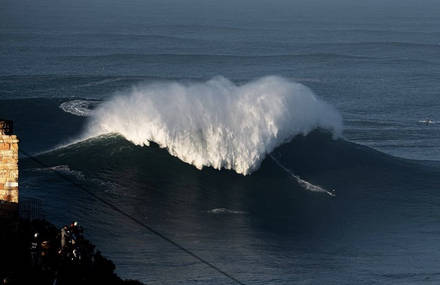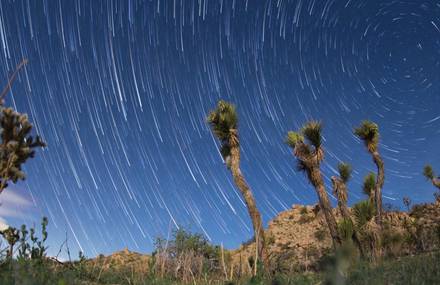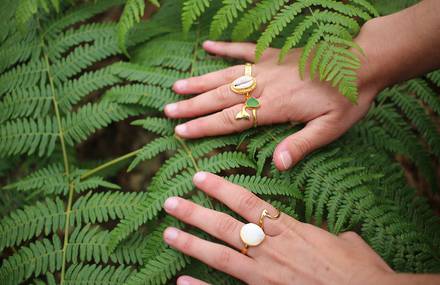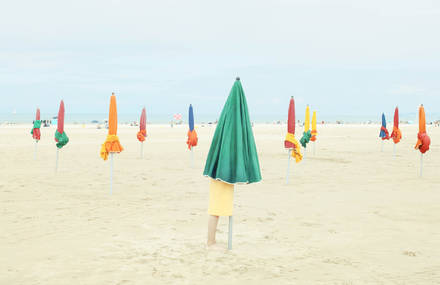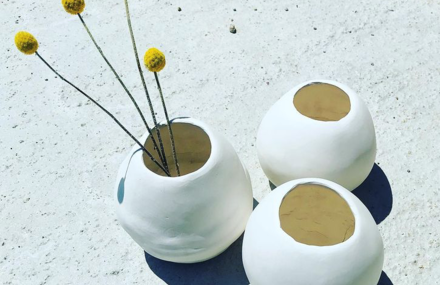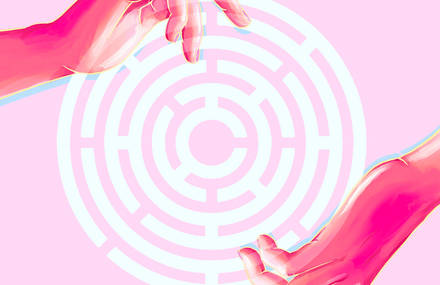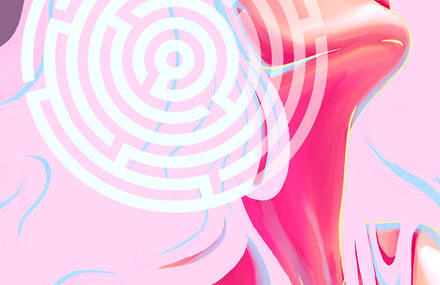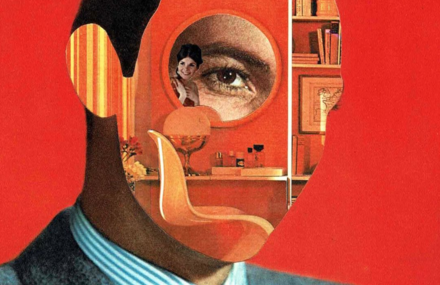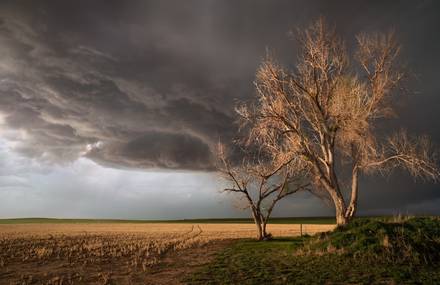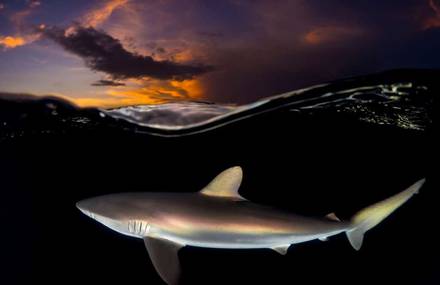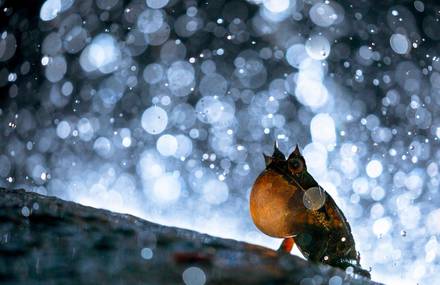To end 2014, The Guardian took the time to remember the different powerful events that have marked this year : attacks in Gaza or Ukraine, The World Cup, Oscar Pistorius’ trail, the disasters of Ebola and also Ferguson’s protests, the editorial board has selected the 20 most striking pictures that have made the news.
Islamic State militants were being photographed the moment an air strike explosion goes off on 23 October 2014. ‘I was in the village of Yumurtalik on the Turkish side of the border. Isis were on a hill about 1km away from me on the Syrian side. It was about 6.15pm and there was about 10 minutes left until sunset. A friend who was with me said: “Can you imagine an air strike now?” Five minutes later, this is what happened. I was already photographing members of Isis when an aircraft bombed the hill. Within 30 minutes it was dark and we had to leave the village, it wasn’t safe at night.’ Photograph: Bulent Kilic/AFP/Getty.
A Palestinian boy looks out of his family’s damaged house in Gaza on 12 October 2014. ‘On the same day that Gaza’s reconstruction conference was held in Egypt, I decided to go early in the morning to the Shujai’iya area to take pictures to go with the conference story. I walked through the debris-strewn streets looking for people in the neighbourhood, which had been heavily bombed by Israeli forces during the war. While walking, I glimpsed the boy inside a damaged house as the woman was arriving at her destroyed home in the same area. I found it very illustrative of life after war.’ Photograph: Mohammed Salem/Reuters.
A young girl is pictured after being wounded during clashes between riot police and protestors in Istanbul on 12 March 2014. ‘Berkin Elvan was a 15-year-old boy struck by a teargas canister during anti-government protests in June 2013. He died on 11 March 2014 after being in a coma. Turkish people were so angry, and clashes began soon after his death. Many teenagers from high schools attended the funeral and the street protests. I saw this girl affected by teargas and water cannon. She was unable to speak or move. I shot three or four photographs of her and then her friends took her away.’ Photograph: Bulent Kilic/AFP/Getty.
Brazilian fans celebrate during the World Cup match between Brazil and Croatia in Sao Paulo on 12 June 2014. ‘Although you always have the ambition of trying to find something new or different before a match, it is not always possible when your movement is restricted and time limited before the main event starts. As soon as I saw the reflection in the glass fence I knew there could be a good image there, but on my first attempt the light wasn’t quite right. So at half time, as the sun was setting, it finally came together with light, colour and shapes and the picture was sent to the AFP desk.’ Photograph: Odd Andersen/AFP/Getty.
Uruguay’s Luis Suárez reacts after clashing with Italy’s Giorgio Chiellini during the World Cup match in Natal on 24 June 2014. ‘During the World Cup in Brazil, I witnessed one of the biggest moments. I was covering Italy v Uruguay and, during the second half, there was some strange contact between Chiellini and Suárez. I was following the action elsewhere on the pitch, but I saw them both fall down. I didn’t know that Suarez had actually bitten Chiellini. I only discovered the real story at the end of the match when I was in the press room.’ Photograph: Tony Gentile/Reuters.
Umu Fambulle stands over her husband Ibrahim after he staggered and fell, knocking him unconscious in an Ebola ward in Monrovia, Liberia, on 15 August 2014. ‘Ibrahim died in the blue room where he fell. He had struggled to his feet to move away from the corpses, to a different classroom in the Ebola holding centre. As he staggered toward the door, he lost his balance, fell backwards, and his head hit the concrete floor with a loud popping sound. I’m still haunted by the memory of his wife Omu rushing in, standing over him, unable to caress or comfort him, unsure what to do.’ Photograph: John Moore/Getty.
A South Sudanese man from the Dinka ethnic group stands among cattle in Yirol on 12 February 2014. ‘After some weeks in South Sudan spent documenting the conflict destroying the world’s youngest country, I started looking for the other side of Africa, the one where man and nature live side by side. I took this image in a cattle camp during the blue hour. Man, animals, smoke and light living together, recalling the ancestral nature of the human being.’ Photograph: Fabio Bucciarelli/AFP/Getty.
Police block a road in Kiev, Ukraine, on 24 January 2014. ‘After two months of relatively peaceful but persistent protests, the situation in late January turned markedly confrontational. I arrived back in Kiev only the night before, and the icy scene that greeted me that morning was otherworldly. Walls of burning tyres periodically doused by police water hoses created an ether of steam and smoke that filtered the winter light. I climbed atop a barricade to peek over and through the haze saw this line of police officers looking back at me.’ Photograph: Brendan Hoffman/Getty.
Protesters march as lightning flashes in the distance in Ferguson, Missouri, on 20 August 2014 after a police officer shot unarmed Michael Brown. ‘I took this photograph less than two weeks after the fatal shooting of Michael Brown. On this night, a powerful thunderstorm had passed through the area, yet the protesters continued marching as lightning filled the sky. I placed my camera on the ground to keep it steady while holding my shutter open for 1.3 seconds as a group of protesters passed. After several attempts, I was able to get protesters and lightning in the same frame.’ Photograph: Jeff Roberson/AP.
A plain-clothes detective, who had been marching with demonstrators, aims his gun at the crowd after someone identified him in Oakland, California, on 10 December 2014. ‘I was documenting the fifth night of protests following a grand jury decision not to indict a police officer in Eric Garner’s death. This image stands out because it has been seen as a detective threatening protesters. However, it does not convey the preceding events. Before he brandished the gun, the crowd turned on the detectives. It was intense to be so close to someone wielding a gun in an unpredictable situation.’ Photograph: Noah Berger/Reuters.
Oscar Pistorius is photographed in a police van after his sentencing at the North Gauteng high court in Pretoria on 21 October 2014. ‘The only way I could do justice to sum up the end of one of the biggest stories in South Africa was to get a picture of Oscar Pistorius behind bars. I managed to photograph him inside a police “inyala”, an armoured police vehicle, that was transporting him from the court to prison. I forced my way through the police lines and managed to get a few frames of Pistorius sitting in the vehicle with the media, police and onlookers reflected through the window.’ Photograph: Siphiwe Sibeko/Reuters.
The main peloton rides towards the amphitheatre of Buttertubs Pass as the Tour de France’s départ got under way in Yorkshire. ‘Because of the road closures, I parked in Sedbergh 15 miles away and cycled there with my camera in my backpack. I decided to position myself next to some cycling lads that I knew from the Wirral. There I’d be able to jump up on a nearby stone wall to get a shot of the riders snaking their way up. Within a matter of seconds, it was all over. On the ride back to my car, I never imagined that I had taken what was soon to be dubbed “the” photo of the Tour of Yorkshire.’ Photograph: James Maloney/Liverpool Echo.
Residents emerge to receive food aid distributed by the UN Relief and Works Agency at the besieged al-Yarmouk camp in Syria on 31 January 2014. Photograph: UNRWA/Reuters.
People flee Bangui for Cameroon in a container on 22 February 2014. ‘While on my way to a very sensitive checkpoint, ready for more clashes between Muslims and the Christian anti-balaka, I saw a long line of trucks on the side of the road. People had gathered there with suitcases and goods. They were fleeing the country. I stopped my car and decided to have a look around. When I entered the container, no one said anything and no one hid when I began taking photographs. I took four pictures and left. I stood next to the truck for the next 10 minutes trying to hold back my tears.’ Photograph: Fred Dufour/AFP/Getty.
Damaged goods lie in a shelled kitchen in Donetsk, Ukraine, on 26 August 2014. ‘I was in Donetsk, covering the civil war. The city had been attacked by the Ukrainian army from the airport. I was on the balcony of my hotel when I heard the whistle of mortar shells. They had hit a small house. An old man there plaintively cried Vera, Vera … who was his wife. She had shrapnel in her stomach and was taken to the military hospital by neighbours. The next day I found out that the woman had died. For me, this simple picture is a symbol of the civil war, where peaceful life is wrecked in seconds.’ Photograph: Sergei Ilnitsky/EPA.
The shadow of an aircraft is seen in low cloud cover on a search for the missing Malaysia Airlines flight MH370 in the Indian Ocean. ‘I was in Perth covering the search for the missing flight MH370 and was asked to photograph a search mission. At the search area, the plane dropped to 500ft and commenced a long grid-style search pattern. Thirty minutes later, the aircraft dropped down to 200ft in a bid to get under some low-lying cloud hindering visibility. For a split second, I was able to photograph this shadow before we climbed into clear skies. We never dropped to that low altitude again.’ Photograph: Rob Griffith/AP.
Mount Sinabung volcano erupts in North Sumatra, Indonesia, on 8 October 2014. ‘I was very tired after covering the story for five days. I had just filed some pictures and was looking for a place to eat. While eating, I saw the lava dome fall down. I ran to my motorbike to grab my camera. Without my tripod or cable release with me I struggled to use the table and the camera’s timer. Local villagers stood around me crying and praying for people’s safety. I tried to be calm and shot until the low battery warning on the camera came on. I thought I had a good photo and forgot that I was hungry.’ Photograph: Yt Haryono/Reuters.
People run for shelter from a hailstorm on the beach at the river Ob in Siberia, Russia, on 12 July 2014. ‘It was a very hot day which is unusual for a summer in Siberia. My girlfriend and I decided to go to a city beach. When we got there the weather started rapidly changing for the worse and when we reached the water there was a very strong wind. I turned on the camera on my mobile phone just to shoot the trees, which were swaying wildly. Suddenly it started hailing. I continued taking photographs until we were literally being bombarded and then we rushed back to the car.’ Photograph: Nikita Dudnik/AP.
A woman cries as she stands on the road with her luggage after she left her home near the village of Grabovo, Ukraine, on 2 August 2014. ‘It took hours to arrive at the village of Grabovo, the crash site of the downed Malaysia Airlines flight MH17. We were waiting for officials from the Organisation for Security and Co-operation in Europe (OSCE) to photograph them at the scene. Then I saw this young girl crying. She was leaving her home. I took just one picture as she didn’t want me to take more. I understood from friends that she had just lost somebody in the village she was leaving.’ Photograph: Bulent Kilic/AFP/Getty.
In a project to mark the centenary of the start of the first world war, photographer Peter Macdiarmid matched photographs of significant events of the first world war with images of the same locations today. In this final photograph, a Royal Garrison Artillery working party carry duck-boards across the frozen Somme canal at Frise in March 1917, France. Outlines of trenches can still be seen today in the village of Frise. Photograph: Peter Macdiarmid/Lt J W Brooke/IWM/Getty.
